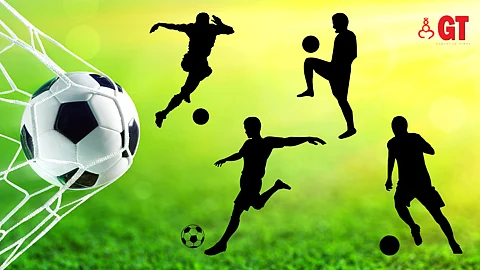

BY ALBERTO COLACO
Whenever the Goa state football team or even the football club teams perform dismally at national or inter-club tournaments, the print and social media bombard us with a barrage of opinions from a wide range of football experts.
In a democratic set-up, everyone is entitled to express their views, and even though we may not subscribe to them, they have to be respected.
The current dismal performance of the Goa state team in the National Football Championship for the Santosh Trophy has, as expected, evoked the usual outpouring of views and assessments from the innumerable Goan football followers.
This will continue for some time and, with public memory being short, it will be forgotten by everyone.
When AIFF (All India Football Federation) announces the dates for the Santosh Trophy, the GFA (Goa Football Association) will frantically start looking for a coach and, more often than not, appoint someone who has not seen either the junior or senior players in the GFA leagues.
In the present format, the AIFF does not allow players participating in the ISL and I-League to play for their state in the Santosh Trophy.
Goa has nearly fifty players in these two leagues. They have been deprived of an opportunity to represent Goa.
Similar is the case with states like West Bengal, Manipur, Kerala and Mizoram. These states have also failed to qualify for the semi-finals in the ongoing Santosh Trophy.
But instead of grudging the changes in the regulations governing the eligibility of players to represent the state, this can be used to our advantage.
There can be two main reasons for AIFF to introduce the regulations depriving the players in the I-league and the ISL of representing their home state in the Santosh Trophy: i) to not disturb the ISL and I-League tournaments and ii) to allow young players to represent their states and provide them with a platform to display their talent on a bigger stage.
I think this is where the GFA has not utilised the changes in the eligibility regulations, to give upcoming talented youngsters a chance to play for the state.
Although winning the Santosh Trophy does not have the aura it had before, most football fans consider a good performance in the Santosh Trophy the benchmark of the football standard in the state.
The hype around the tournament puts a lot of pressure on the GFA and the coaches, and they prefer to rely on the old war horses, who, it must be said, have served the state, their clubs and even sometimes the national team with distinction in the past.
With their best years behind them, they are not able to perform at the required level, especially when they have to play 5 matches in 10 days.
The results are obviously not according to the expectations of the GFA and football fans.
It is obvious from the results in the last few years that besides not winning the tournament, we have failed to produce players who will graduate to the bigger clubs and then gain and hold a regular place in the national team.
It is unfortunate that except for Liston Colaco and Brendon Fernandes, no other Goan player has a regular place in the national team.
Not being able to field the best players in the state in the team playing in the Santosh Trophy is not a new situation. When the National Football League started, the Santosh Trophy was slotted between the NFL qualifying and final rounds.
Dempo, Salgaocar and Churchill having qualified for the final rounds of the NFL, were reluctant to release their players for the Santosh Trophy preparatory camp and the final team.
Having foreseen that this situation may arise, the GFA decided to select around 30 young players from the remaining teams and conduct practice sessions for them every Sunday.
This decision paid off, and for the Santosh Trophy in 1977, GFA selected a team consisting predominantly of the players taking part in this programme. This so-called second-string team performed exceedingly well and lost to a full Bengal side by a solitary goal in the finals.
Many upcoming players came from this programme, and they formed the core of the Goa state and club teams in the late 90s and the early part of the 21st century.
Nothing can be achieved overnight. It is most important to have very competitive leagues, both at the top and the youth level with players getting an opportunity to play a sufficient number of matches.
It is an undeniable fact that the standard of the pro league has gone down and at the youth level the number of matches played is grossly inadequate.
It is the responsibility of the GFA to unite with the GFDC (Goa Football Development Corporation), the small and the big together, to draw up a common football development programme for Goa.
Unfortunately, sometimes it appears that these entities work at cross purposes. At the youth level, it is more important to produce quality players than to win competitions. A special committee with clear terms of reference has to be constituted and entrusted with this task.
Those chosen to lead this very important assignment must recognise that they are fortunate to be assigned this enormous responsibility and always remember that in their hands lies the destiny of our budding football players and Goan football.